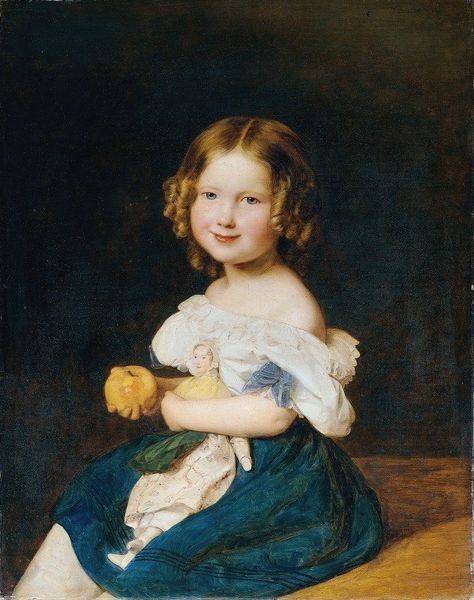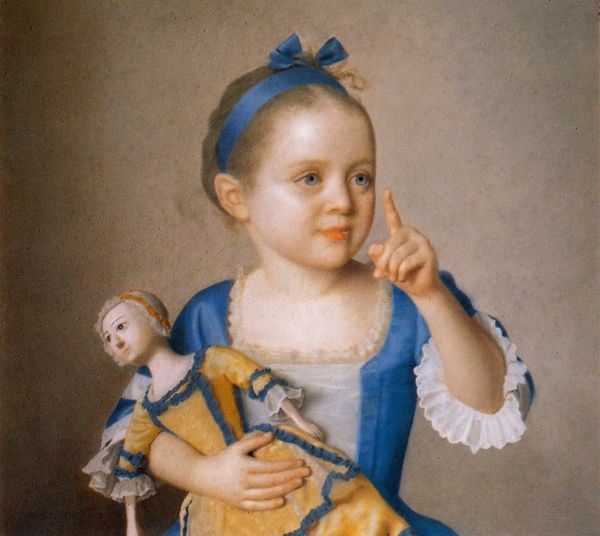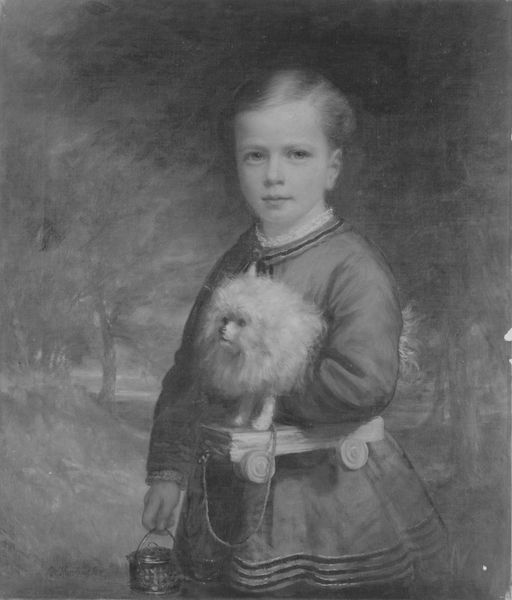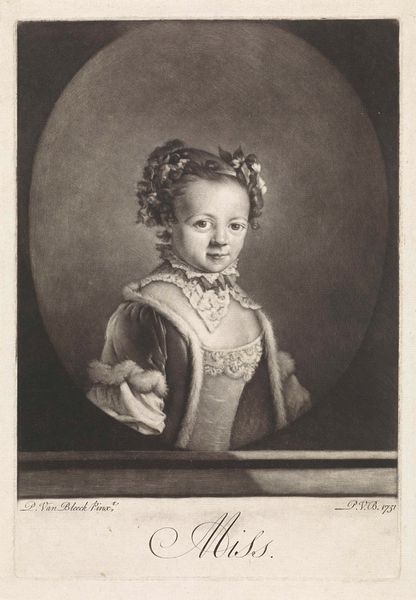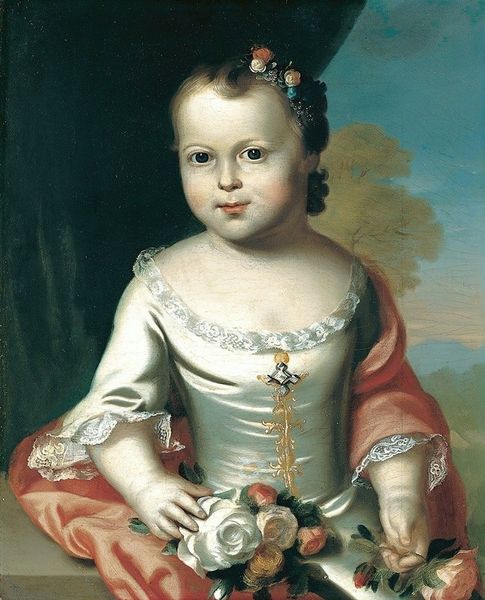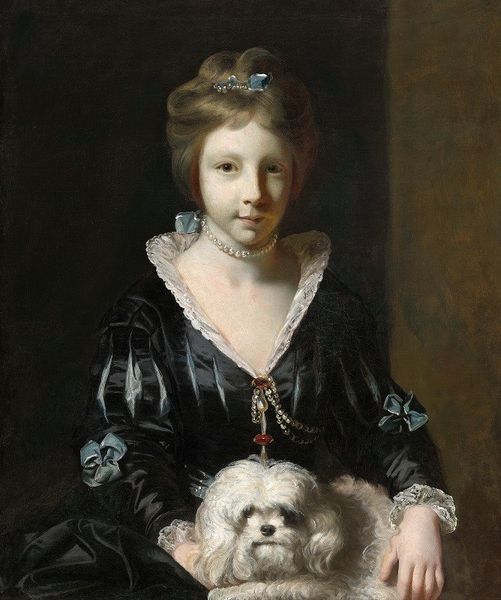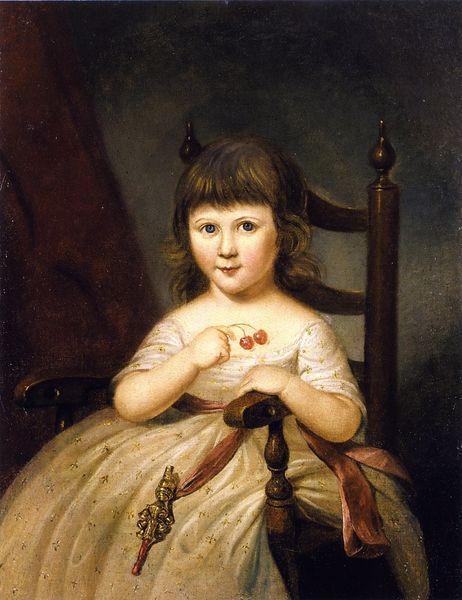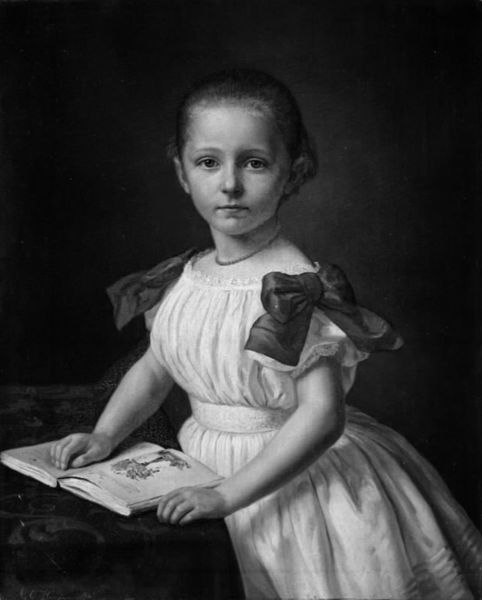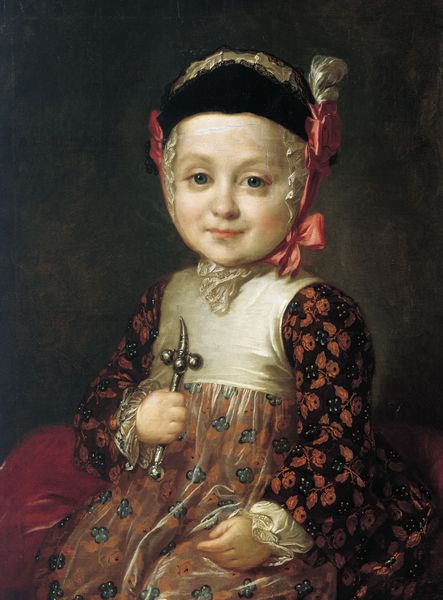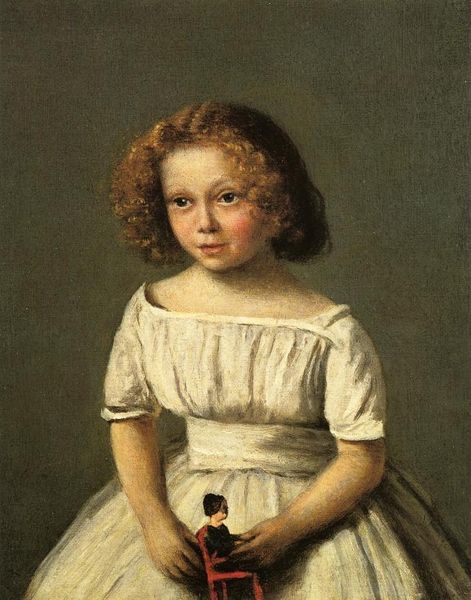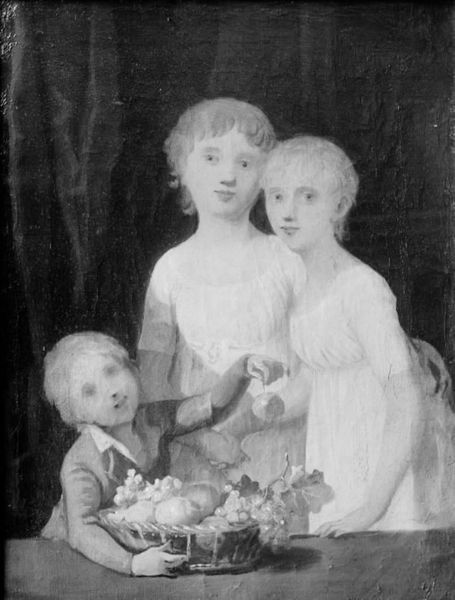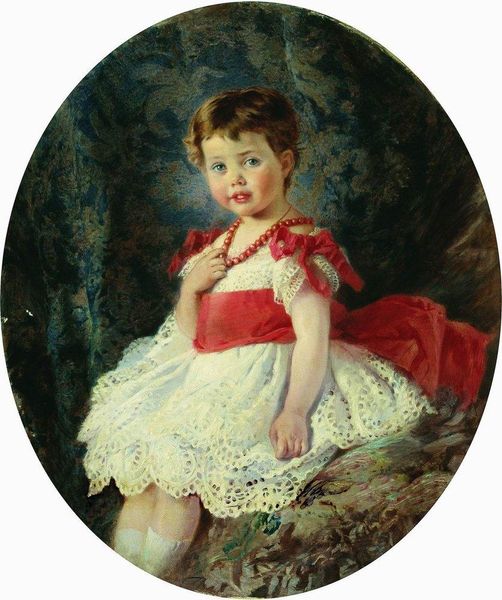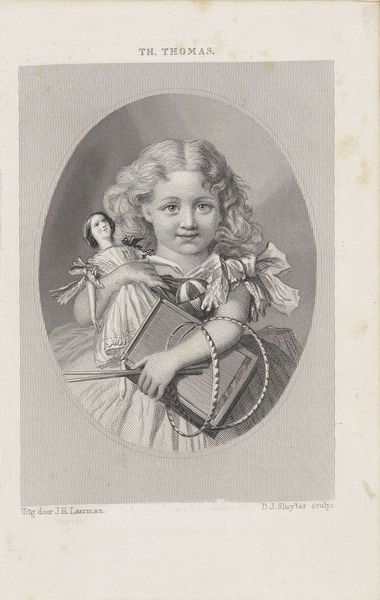
painting
#
portrait
#
portrait
#
painting
#
genre-painting
#
rococo
Dimensions: 64.8 × 49.5 cm (25 1/2 × 19 1/2 in.)
Copyright: Public Domain
Curator: So, we're looking at Alessandro Longhi's "Portrait of a Girl with a Dog," painted around 1740. It's currently at the Art Institute of Chicago. Editor: It's quite charming, isn't it? A young girl, clearly from a wealthy family given her attire and the dog, almost self-consciously holding her pet. What can we learn from how Longhi chose to represent this young girl? Curator: Well, consider the materials themselves. Oil paint, canvas... these weren't cheap. The act of commissioning such a portrait speaks volumes about the family's economic status and their desire for social visibility. How much did the girl know about her position within her household and the demands upon it, vis a vis the acquisition of objects and goods like oil, brushes, clothing, and pet? Editor: That's a perspective I hadn’t fully considered. So it is less about just showcasing the girl, and more about demonstrating the family's wealth through the consumption of these materials? Curator: Exactly. And look at the details. The lace, the pearls, even the dog, are all products of specific industries and labor practices. Who made them? How were they acquired? Each element points to a network of production and consumption that defined aristocratic life in 18th-century Venice. Think of all the hands involved. Editor: The lace is an interesting choice here; the girl, in possessing these materials, represents someone else's labour! Do you think the choice to represent it here is an act of complicity or protest? Curator: Certainly, her display indicates the economic inequalities inherent in the portrait. It perhaps unwittingly offers a window into the socio-economic structures of the time, less about aesthetic appreciation, and more about the materiality of power. It reflects consumption. Editor: I never thought I’d see portraiture as a study in material culture and economic disparities. This opens up a completely different understanding of the work! Curator: Indeed. And by examining these material traces, we can gain a much richer understanding of the past, questioning traditional boundaries.
Comments
No comments
Be the first to comment and join the conversation on the ultimate creative platform.
